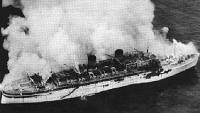 The brochure for for the cruise liner Lakonia promised “A MARVELOUS CHRISTMAS CRUISE TO SUNNY MADEIRA AND THE CANARY ISLANDS…HAVE YOUR HOLIDAY WITH ALL RISK ELIMINATED. ENJOY A HOLIDAY YOU WILL REMEMBER FOR THE REST OF YOUR LIFE.”
The brochure for for the cruise liner Lakonia promised “A MARVELOUS CHRISTMAS CRUISE TO SUNNY MADEIRA AND THE CANARY ISLANDS…HAVE YOUR HOLIDAY WITH ALL RISK ELIMINATED. ENJOY A HOLIDAY YOU WILL REMEMBER FOR THE REST OF YOUR LIFE.”
Now fifty years later, the survivors and families of those aboard remember the last cruise of the Lakonia, which ended in disaster and the loss of 128 passengers and crew. Earlier this month, survivors unveiled a plaque on Gibraltar to commemorate those lost. As reported by the Gibraltar Chronicle:
The plaque was commissioned by the Gibraltar Heritage Trust to commemorate the terrible night when the cruise ship caught fire off the coast of Madeira in the Atlantic and lost 128 lives. Of those who perished 58 were buried in North Front Cemetery in Gibraltar, but since then most have been repatriated. There are 14 graves remaining now, nine in the Protestant area, two in the Catholic area and three in the Jewish cemetery.

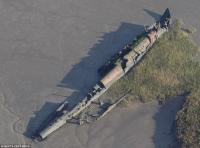 There was a
There was a  President Obama recently nominated
President Obama recently nominated 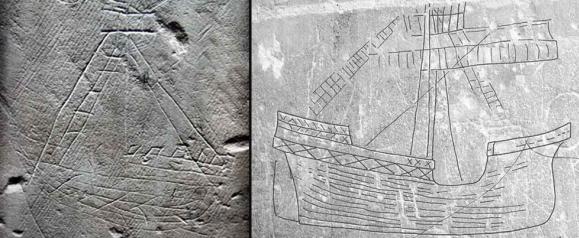 A recent article in
A recent article in  Got a minute? Here is an animation of the world’s weather across the globe, showing the winds blowing across our ocean planet, as forecast by supercomputers and updated every three hours. You can also rotate the globe in any direction or zoom in and out by clicking and dragging with your mouse, so if you want to look specifically at the North Atlantic or the Southern Ocean, you can do do so. Be careful, however. The display can be mesmerizing.
Got a minute? Here is an animation of the world’s weather across the globe, showing the winds blowing across our ocean planet, as forecast by supercomputers and updated every three hours. You can also rotate the globe in any direction or zoom in and out by clicking and dragging with your mouse, so if you want to look specifically at the North Atlantic or the Southern Ocean, you can do do so. Be careful, however. The display can be mesmerizing. This year,
This year, 

 On a winter’s day, when the temperature here on the banks of the Hudson River is in the low 30s F, but with the wind off the water feels more like the low 20s, there are many reasons to want to pick up and move to sunny and warm, Southern California. And now I’ve found one more — a press release, issued today, from the
On a winter’s day, when the temperature here on the banks of the Hudson River is in the low 30s F, but with the wind off the water feels more like the low 20s, there are many reasons to want to pick up and move to sunny and warm, Southern California. And now I’ve found one more — a press release, issued today, from the 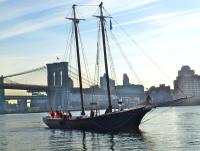
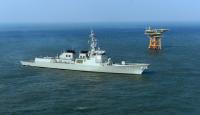
 On the morning of December 7, 1941,
On the morning of December 7, 1941, 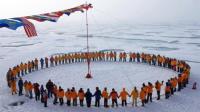 Reports are that Canada is filing a claim to extend its northern sea boundary to encompass an area of over 1 million square miles of Arctic seafloor which includes the North Pole, under provisions of the
Reports are that Canada is filing a claim to extend its northern sea boundary to encompass an area of over 1 million square miles of Arctic seafloor which includes the North Pole, under provisions of the 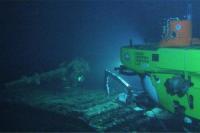 Recently, the crew of the the
Recently, the crew of the the  When it came to destroying Syria’s most dangerous chemical weapons, there was a problem. No nation wanted to take the weapons and face the risks associated with destroying them on their soil. Under an international agreement brokered by the US, Syria’s most dangerous chemical weapons have to be out of the country by a December 31 deadline. The apparent answer is to put the chemical weapons on a ship and destroy the chemicals at sea. The roll-on/roll-off ship
When it came to destroying Syria’s most dangerous chemical weapons, there was a problem. No nation wanted to take the weapons and face the risks associated with destroying them on their soil. Under an international agreement brokered by the US, Syria’s most dangerous chemical weapons have to be out of the country by a December 31 deadline. The apparent answer is to put the chemical weapons on a ship and destroy the chemicals at sea. The roll-on/roll-off ship 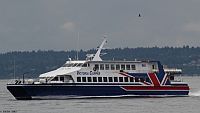 What could be nicer than a boat ride on your birthday? Last Sunday, on his 33rd birthday, Samuel Kenneth McDonough allegedly took the
What could be nicer than a boat ride on your birthday? Last Sunday, on his 33rd birthday, Samuel Kenneth McDonough allegedly took the